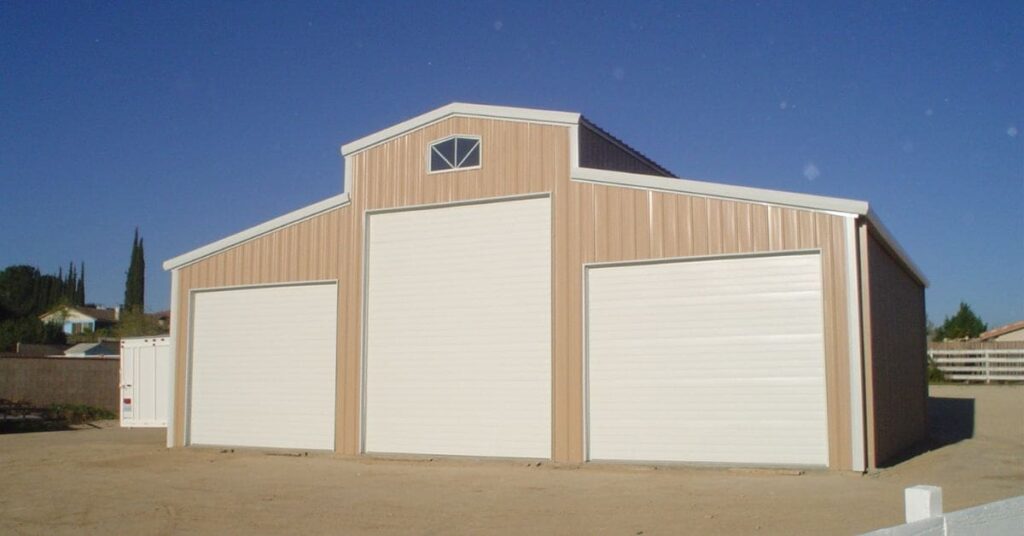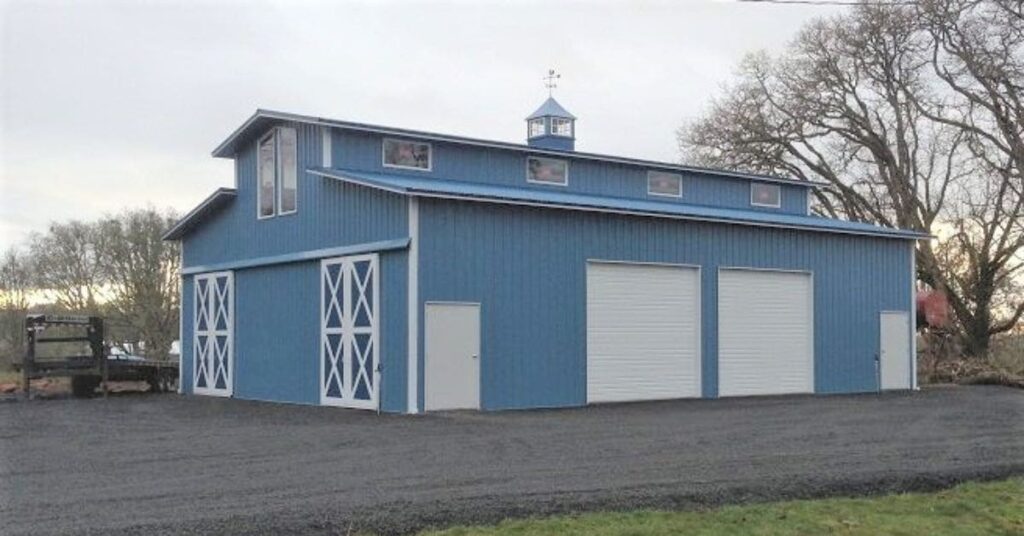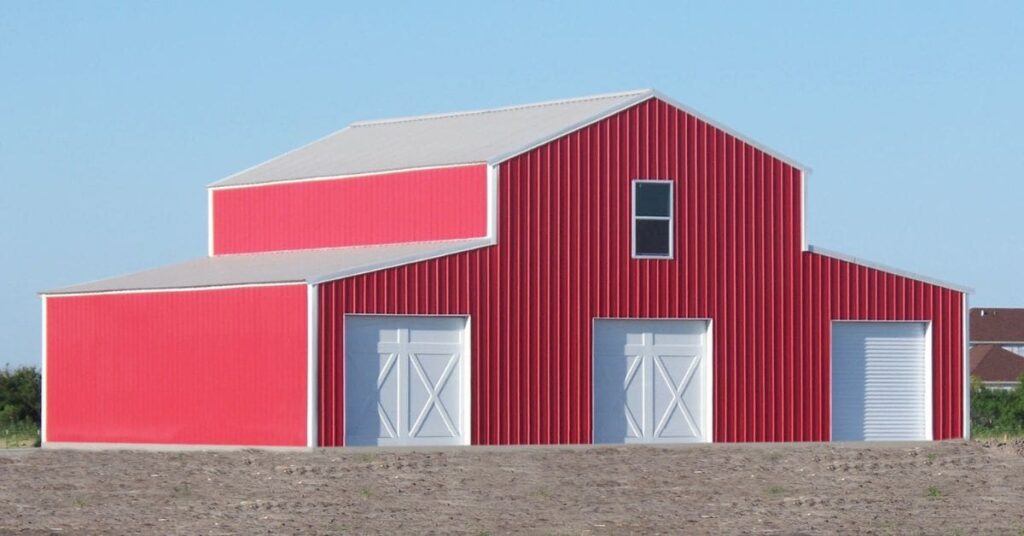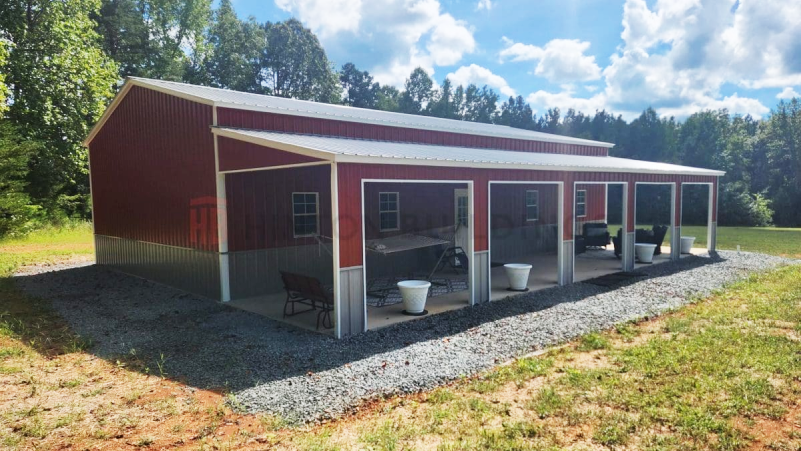
If you’re looking to add a durable and versatile building to your property, creating a metal structure may be the best choice. This task doesn’t have to be daunting. With this essential guide to designing your metal building, you’ll have everything you need to turn your vision into reality!
Metal buildings offer several advantages that make them excellent for designing a space that meets your needs.
Before you start designing, determine the primary purpose of your metal building to guide your design choices, from size to layout to features. Will it serve as a commercial space, a storage unit, or a recreational area?
You should also consider future needs. If you anticipate needing more space later, it might be wise to design your building with expansion in mind. This forward-thinking approach can save you time and money down the line.
The size and layout of your metal building are critical considerations. Start by determining the square footage you need. Measure the area where the building will stand, and think about how much space you require for your activities.
Don’t forget to account for accessibility! Ensure there are enough entry and exit points, and consider the flow of movement within the building. A practical layout can enhance the functionality of the structure.

Choosing the best materials for your metal building is essential for its longevity and performance. Most metal buildings are made from steel, which is known for its strength and durability.
Galvanized steel is coated with a layer of zinc to prevent rust and corrosion, making it an excellent choice for buildings exposed to various weather conditions. Alternatively, you might opt for weathering steel, which forms a stable rust-like appearance after exposure to weather, reducing the need for painting.
One of the significant advantages of metal buildings is designing them to meet your needs. Here are some things to think about when it comes time to design your own metal building:
The placement and type of windows and doors are crucial for functionality and aesthetics. Roll-up doors might be ideal for storage buildings, while large glass windows can enhance the appearance of a commercial space.
Insulation is vital for maintaining a comfortable temperature inside the building and improving energy efficiency. Consider options like spray foam, fiberglass batts, or insulated panels.
Good ventilation controls indoor temperature and humidity levels, which is especially important for workshops and storage buildings. Options for ventilation include ridge vents, exhaust fans, and louvers.
Consider using energy-efficient lighting solutions, such as LED fixtures and motion sensors. Letting in natural light through windows and skylights can also reduce the need for artificial lighting during the day.
Installing solar panels on your metal building’s roof can generate renewable energy, reducing reliance on grid electricity and lowering your utility bills. Evaluate your building’s orientation and roof space to determine the feasibility of solar panel installation.
Choose finishes that match your style and functional needs. Metal panels are popular for exteriors due to their durability and low maintenance, while interior finishes can vary depending on the building’s use.
Choosing a roofing system is a crucial aspect of metal building design, as it influences the structure’s durability.
Integrating colors can enhance the structure’s aesthetic appeal and create an inviting atmosphere. Soft, neutral tones can provide a modern look, while bold colors might add character and individuality. While functionality is essential, a visually appealing building creates a positive impression and enhances its overall value.
When designing your metal building, make sure it can withstand the loads and forces it will encounter. This includes considerations for wind, snow, and seismic activity, depending on your location. Work with a structural engineer to calculate the necessary load-bearing capacities and design a framework that will stand tall against the forces of nature.
Additionally, consider incorporating bracing systems, such as moment-resisting frames or shear walls, to enhance the building’s stability. Properly designed foundations are also critical for supporting the structure and distributing loads evenly.
Compliance with local building codes and obtaining building permits is a critical step in the design and construction processes. Following building codes ensures the safety of the project, while acquiring permits is legally required for construction projects.
Start by researching the building codes and regulations in your area. These may include requirements for structural design, fire safety, and accessibility. Next, contact your local building authority to determine the permits you need for your project. Understanding these regulations will help you design a building that meets all legal standards.

Budgeting is a crucial aspect of any construction project. Setting a strict budget ensures you have the necessary funds to complete the project without unexpected financial strain. Start by estimating the total cost of your metal building project, including expenses for materials, labor, and permits. Then, think about additional features or customizations that will add to the costs.
Look for opportunities to save money without compromising quality. This might include sourcing materials from reputable suppliers at competitive prices, considering prefabricated components, or optimizing the design for efficiency. Compare interest rates and terms to find the best option for your needs, and consider contingencies for unexpected costs.
Regular maintenance is essential for the longevity and performance of your new metal building. It also prevents issues and extends the lifespan of the structure. Conduct routine inspections to identify wear, damage, or corrosion. Additionally, inspect the roof, walls, foundation, and other critical components.
Regularly clean the exterior and interior of the building to remove dirt, debris, and contaminants. Pay attention to areas prone to moisture buildup, as it can lead to corrosion. Keep gutters and drainage systems clear to prevent water damage. Finally, address any issues promptly to prevent further damage.
Designing your metal building is an exciting and rewarding endeavor. With careful planning, attention to detail, and a clear understanding of your goals, you can create a structure that meets your needs and stands the test of time.
Remember, your metal building is not just an investment in your property but also your future. By following these steps, your investment will serve you well for years.
